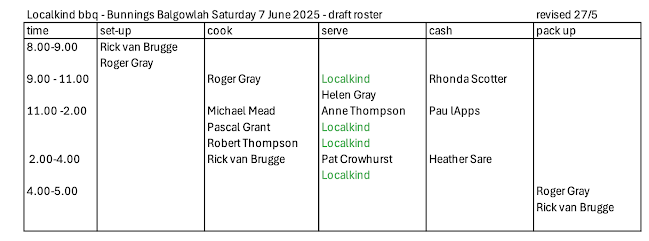The Story of the Rajah Quilt
The Story of the Rajah Quilt
Our meeting on Tuesday June 3, had a most interesting and professional presentation by Anne Thompson helped by her granddaughter, Grace. We learnt the fascinating history and background of the Rajah Quilt.
 |
| Anne and Grace(seated) presenting the history of the Rajah Quilt |
A Tale of Hope and Resilience
The Rajah Quilt is a remarkable artifact of history and human resilience, representing the ingenuity, determination, and creativity that arise even in the most challenging circumstances. Its story is intertwined with the journey of convict women transported to Australia and serves as a testament to the enduring power of art.
The Context of Transportation
In the early 19th century, transportation was a common punishment for crimes in Britain. Convicts were sent to faraway colonies, including Australia, to serve their sentences. Among them were many women convicted of petty crimes, often driven to desperation by poverty. These women faced arduous journeys aboard convict ships, enduring months at sea in overcrowded and unsanitary conditions.
One such ship was the Rajah, which departed from England in April 1841, bound for what was then Van Diemen’s Land (now Tasmania). Onboard were 180 female convicts, many of whom had been sentenced for theft or other minor offenses. The Rajah Quilt’s story begins on this vessel.
The Creation of the Quilt
The quilt was crafted during the voyage of the Rajah, thanks to the initiative of Elizabeth Fry, a prominent social reformer and advocate for prison reform. Fry had founded the British Ladies Society for the Reformation of Female Prisoners, which aimed to improve the lives of female convicts through education and rehabilitation. One of the society’s efforts was to provide sewing materials to female prisoners, enabling them to learn valuable skills and engage in productive activities.
On the Rajah, the women were given fabric, needles, and thread as part of this initiative. Supervised and guided by Kezia Hayter, the matron aboard the ship, the convict women set about creating a quilt. It was an exercise in collaboration and creativity, giving them a sense of purpose and camaraderie during their difficult journey.
The Design and Significance
The quilt is a medallion-style piece, featuring intricate patchwork and appliqué designs. It measures approximately 325 cm by 337 cm and incorporates a central panel surrounded by borders, all meticulously hand-stitched. The patterns reflect traditional English quilting styles, but they also bear the personal touches of the women who contributed to its creation.
The Rajah Quilt is more than just a beautiful textile; it is a tangible expression of hope and resilience. For the women who crafted it, the act of sewing was a way to reclaim a sense of agency in their lives and to create something meaningful amid the hardships of transportation. It also served as a form of rehabilitation, helping them develop skills that could be used once their sentences were completed.
The Journey and Rediscovery
After arriving in Van Diemen’s Land, the quilt was presented as a gift to Lady Franklin, the wife of Sir John Franklin, then Governor of the colony. It symbolized the efforts of Elizabeth Fry and the convict women to demonstrate their potential for redemption and reform.
For many years, the quilt vanished from public view, its story forgotten. It was rediscovered in 1987, folded away in a trunk in the National Gallery of Australia. Its reappearance sparked renewed interest in the lives of convict women and their contributions to Australian history.
The Legacy of the Rajah Quilt
Today, the Rajah Quilt is housed in the National Gallery of Australia, where it is preserved as a national treasure. It continues to inspire visitors with its intricate beauty and profound history and serves as a reminder of the resilience of the human spirit and the transformative power of creative endeavor.
Franklin as a Cultural Hub
Franklin, being a town rooted in Tasmania’s heritage, would provide an apt setting to showcase this artifact. It would serve as a bridge connecting the tales of hardship, redemption, and communal creativity that shaped the lives of those transported to Australia.
The Rajah Quilt offers a unique educational opportunity. Displaying it in Franklin would give schools, universities, and community groups a chance to learn about Australia’s penal history through a tangible artifact. Its story highlights themes of resilience, unity, and creativity, which resonate strongly with modern audiences. Workshops and discussions centered around the quilt could foster a deeper understanding of the convict experience.
Franklin is a community known for its dedication to preserving and celebrating cultural history. Hosting the Rajah Quilt here would allow it to be part of an environment that values storytelling and historical preservation. The quilt could become a centerpiece of exhibitions and educational programs, inspiring visitors to delve deeper into Tasmania's convict history and broader colonial past
Conclusion
The story of the Rajah Quilt is one of endurance, creativity, and the capacity for human connection in the face of adversity. As an enduring symbol of hope, it continues to resonate with audiences, offering a window into the lives of convict women and the broader history of Australia.
Franklin’s dedication to preserving and celebrating history makes it the perfect home for the Rajah Quilt.
Everyone thanked Anne and Grace for this amazing story that was told so well and the amazing effort that they put into presenting it.
 |
| Anne being presented with Certificate of Appreciation by Pat Crowhurst |










Comments
Post a Comment